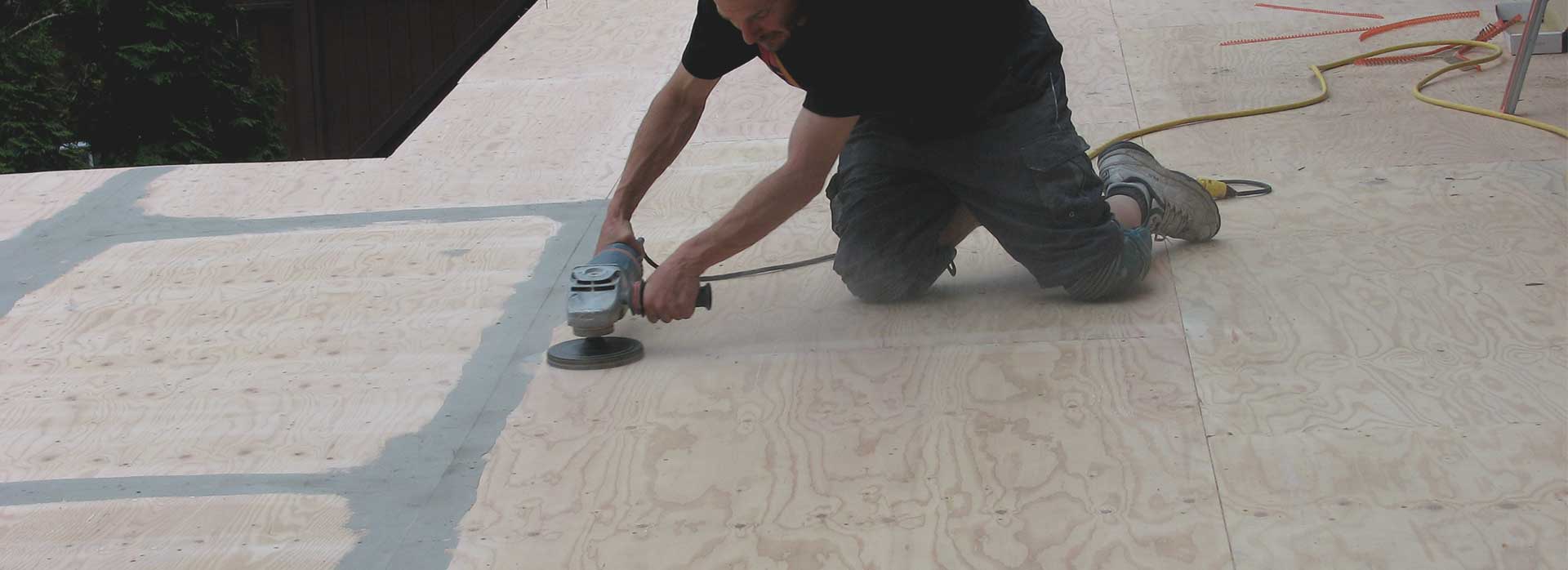USA: 1-800-338-3568 | CANADA: 1-866-591-5594

Installation Considerations
Important Considerations the Builder Needs to Know to Prepare for a Duradek Vinyl Installation
Best Practice Guide for Builders
A construction site can be a buzzing hub of activity with various sub-trades working with each other, around each other, and sometimes on top of each other.
Whether your job site is a complex multi-residential new build or a simple waterproof resurfacing on a residential deck, there are some important installation considerations you should be aware of for a successful Duradek installation.
Please review the information below and download this handy Best Practice Guide for Builders for reference on your project. Contact an authorized Duradek Installer/Applicator for the required information.
Subsurface
The better the subsurface, the better finished outdoor flooring we can give you. A properly prepared subsurface using sanded (untreated) plywood will give the best-finished surface possible. We recommend ⅝” T&G untreated plywood for the flattest subsurface for your vinyl deck covering. Please visit our Substrate and Edge Trims page for detailed information on preparing the subsurface for a Duradek installation.
Slope
For the best product performance and enjoyment of your vinyl deck surface, the deck subsurface should be sloped (ideally 2%) to eliminate ponding water. If puddling were to occur, the area would require more regular cleaning due to the build-up of dirt and pollutants. Ponding water will not affect the waterproofing of the vinyl but may eventually cause premature discoloration in the vinyl deck covering.
Penetrations
All penetrations (posts, pillars) must be sealed to prevent water from entering under the vinyl. All wood posts or pillars will eventually crack and give access for water to get under the vinyl covering and into the subsurface. Caulking and regular inspection are required. To completely waterproof a vinyl deck that has posts, either fasten the posts to the fascia of the building or completely cover surface mounted posts with a waterproof membrane and clad. When fastening metal rails or posts to a vinyl deck surface, all pilot holes should be filled with a sealant before screws are inserted.
Compatibility
Vinyl will resist most staining materials, but some do cause problems. Exterior oil based stains, any tar or bitumen based product, fresh cedar, and some pressure treated lumber may permanently stain the vinyl.

Seaming
The strength of the Duradek system is the method we use to weld the vinyl sheets together. The vinyl is installed with a ¾” overlapped, heat welded seam which can be handled one of two ways.
1) – a slightly raised seam where the overlap occurs, or
2) – a level seam if your installer routers a channel for the overlap to lay in.
You may have heard of butt seaming or a chemical weld seam to fasten vinyl lengths to avoid this overlap. While those methods are acceptable for indoor vinyl where the temperature change is slight, outdoor vinyl requires a much stronger heat welded seam. This ensures a completely water-tight seal when handling the expansion and contraction from temperature fluctuations.
Railing
If railings are to be installed on the vinyl surface, try to mount them so they do not penetrate the membrane. Wooden rails should be notched out and bolted to the side of the deck (fascia mounted). For a proper seal, metal rails should have all screw holes caulked before inserting the screw. Refer to our railing installation detail drawings or contact your Duradek Contractor for more information.
